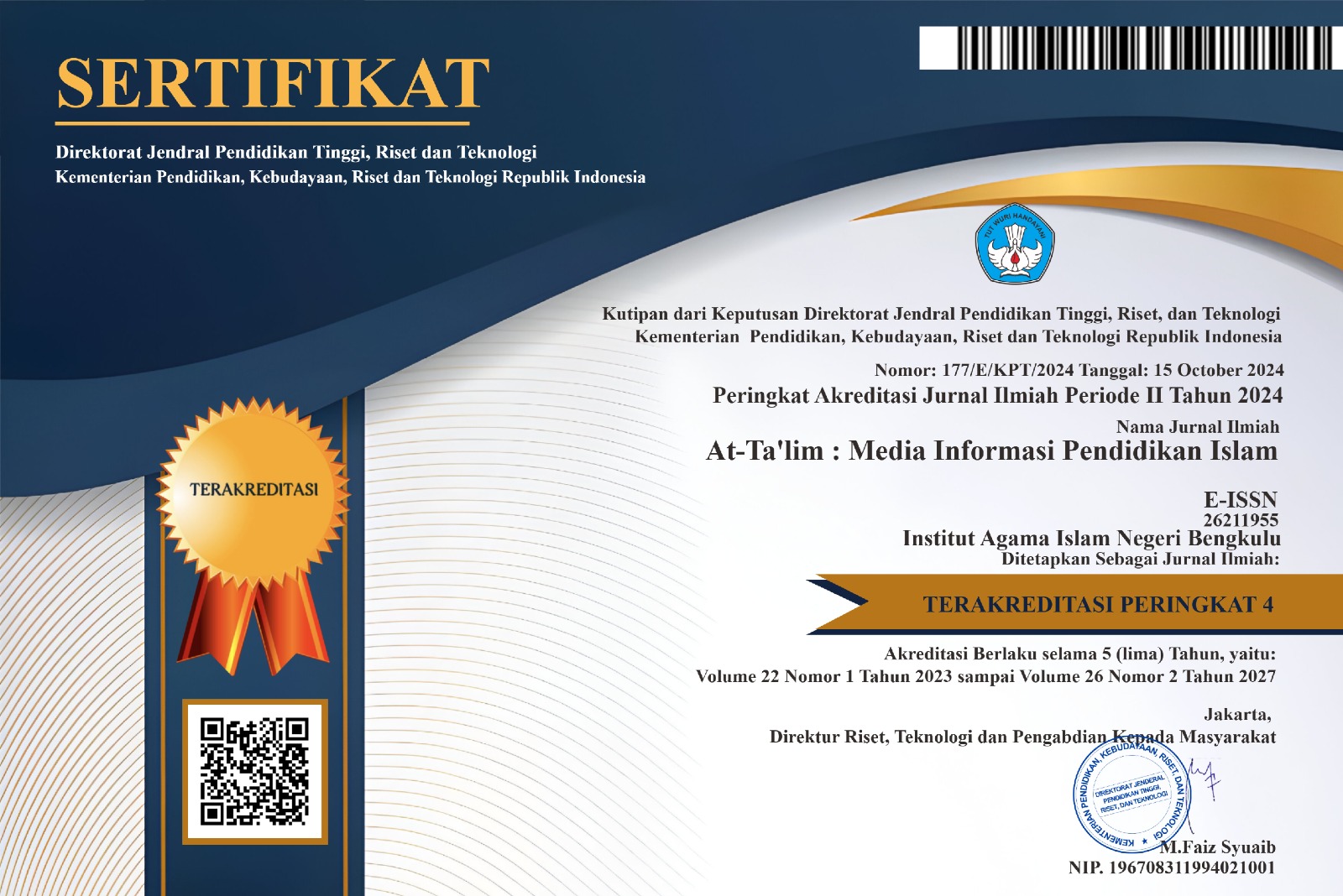At-Ta'lim: Media Informasi Pendidikan Islam is a double-blind peer-reviewed journal. Every paper submitted to At-Ta'lim: Media Informasi Pendidikan Islam for publication must go through a peer review process. Peer review in this journal is an evaluation of a submitted paper by two or more individuals’ competence to the article. It aims to determine the eligibility of an academic paper for publication. The peer review method is used to maintain quality standards and provide credibility for papers. The peer review process in At-Ta'lim: Media Informasi Pendidikan Islam is carried out through 9 steps with the following description:
- Paper Submission The corresponding author or authors submitting the paper submit the paper to the journal. This is done through an online system supported by the Open Journal System (OJS).
- Editorial Assessment Submitted manuscripts will be assessed first by the editors of At-Ta'lim: Media Informasi Pendidikan Islam. The editors check whether the paper fits the focus and scope of the Journal. The composition and organization of the paper is evaluated based on the journal's Author Guidelines to ensure that the paper includes the required sections and language style. In addition, an assessment of the minimum quality required for publication is initiated at this stage, including an assessment of whether there are any major methodological flaws. Any manuscript that passes this stage will be checked by Turnitin to measure the similarity index leading to plagiarism before being reviewed by the reviewers.
- Assessment by the Editor-in-Chief. The Editor-in-Chief checks whether the manuscript is appropriate for the journal, original enough, interesting, and significant enough to be published. Otherwise, the manuscript may be rejected without further review.
- Invitation to Reviewers The managing editor sends invitations to individuals he/she believes would be appropriate reviewers (also known as referees) based on expertise, closeness of research interests, and no conflict-of-interest considerations. The peer review process in At-Ta'lim: Media Informasi Pendidikan Islam involves a community of experts who are qualified and capable of conducting an impartial review. This impartiality is also maintained by the double-blind peer review used in this journal. This means that the reviewers do not know the identity of the authors, and conversely, the authors do not know the identity of the reviewers. Manuscripts are sent to reviewers anonymously.
- Response to Invitations Potential reviewers weigh the invitation against their expertise, conflicts of interest, and time availability. They then decide to accept or decline. In the invitation letter, the editor may ask the prospective reviewer to suggest an alternative reviewer, if he or she declines to review.
- The Reviewer allocates time to read the manuscript several times. The first reading is used to form an initial impression of the work. If major problems are found at this stage, the reviewer may feel comfortable rejecting the work without doing any further work. Otherwise, they will read the paper several more times, taking notes to create a detailed point-by-point review. The review is then submitted to the journal, with a recommendation to accept, or reject it, or with a request for revision (usually marked as major or minor) before reconsideration.
- Journal Evaluates Reviews The Editor-in-Chief and handling editor will consider all returned reviews before making an overall decision. If the reviews differ widely between the two reviewers, the editor-in-charge may invite additional reviewers for additional opinions before making a decision.
- Decision Communicated The editor emails the decision to the author including relevant reviewer comments. Reviewers' comments are sent anonymously to the corresponding author to take necessary actions and responses. At this point, reviewers are also sent an email or letter informing them of the outcome of their review.
- Final Steps If accepted, the manuscript will be sent to editing. Suppose the article is rejected or sent back to the author for major or minor revisions. In this case, the handling editor will include constructive comments from the reviewers to help the author improve the article. The author should make corrections and revise the manuscript according to the comments and instructions from the reviewers.
Once the revisions have been made, the author should resubmit the revised paper to the editor.
If the manuscript is sent back for revision, the reviewers will accept the revised version, unless they do not wish to participate further. However, if only minor changes are requested, this follow-up review can be done by the handling editor. If the editor is happy with the revised paper, it will be accepted. Accepted papers will be published online and all are freely available as downloadable pdf files.






